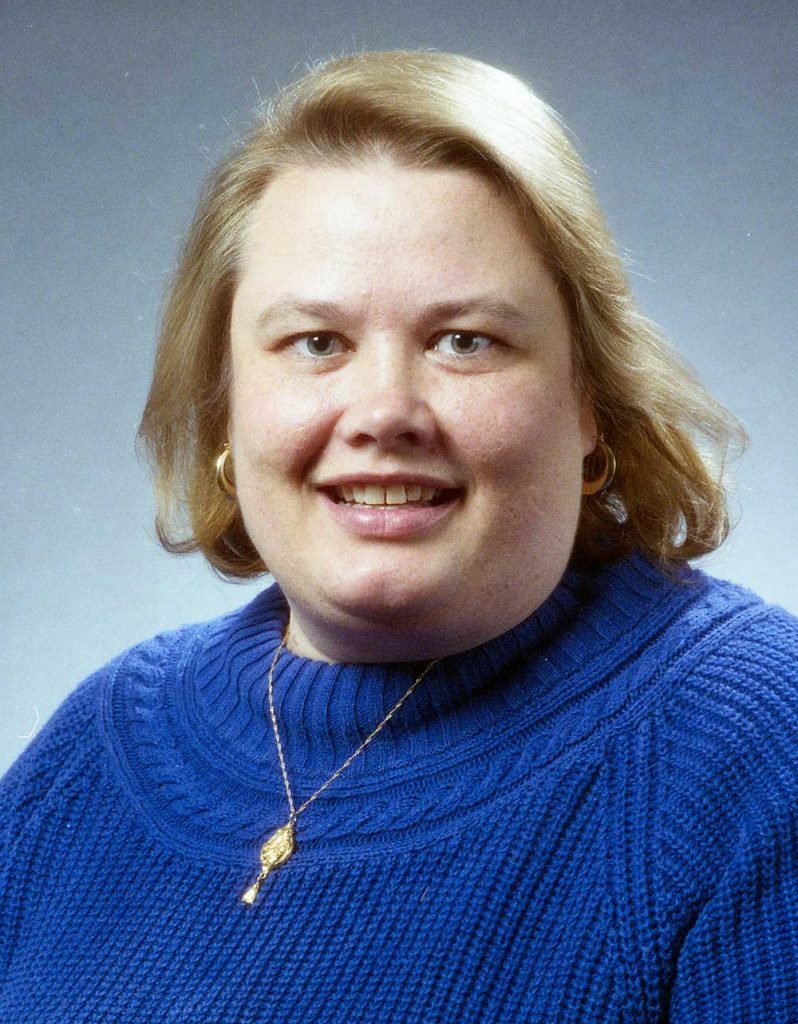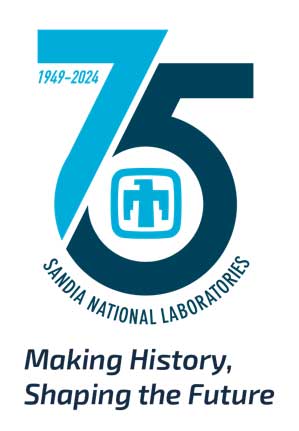
Many employees in Sandia’s Explosive Components Facility probably don’t realize the contributions one long-retired scientist has on their work each day. Even though she retired more than 15 years ago, Anita Renlund’s work at Sandia is having a lasting impact on both the mission and people.
Renlund helped design the Explosive Components Facility, including the reaction dynamics lab, where she performed work. Employees she played a role in hiring are still working at Sandia, some in the programs she helped establish.
Those who worked with Renlund say her contributions to Sandia can be broken down into two main areas: science and people. “She’s a brilliant scientist,” said Alex Tappan, a distinguished member of Sandia’s technical staff in the explosive technologies group. Renlund’s work focused on understanding the chemical dynamics of the very first instant of explosive initiation. “That was really what she loved: the initiation phenomena that involved the first nanoseconds of an explosive reaction. She loved being in the laboratory doing hands-on work,” Alex said.

Renlund began her career at Sandia in 1981, just a few years after earning her doctorate in physical chemistry from the University of Utah at age 23. She retired in 2008.
Enduring programs
A couple of the programs that Renlund was instrumental in standing up are still operating. One program, where Alex works, is vapor deposition of explosives. Explosives can be evaporated and condensed into a film using a vacuum chamber, giving scientists control of the shape of the film. With control over geometry, scientists can study how the explosive detonates and how the velocity of detonation changes as the film thickness changes.
Renlund’s successor, Mike Kaneshige, works in the other program, which studies the response of explosives in abnormal environments, such as fire. Mike remembers that when he started working at Sandia as a postdoctorate employee, Renlund had a project for him.
“That first project that I worked on was an outgrowth of what she had been doing in thermal response of explosives,” Mike said. Renlund had an impact on the research culture within explosives, participating in national and international conferences and getting work published in journals. “She did a great job of representing Sandia to the outside world. She was on the National Academy of Sciences and she helped organize the International Detonation Symposium,” Mike said. Membership in the National Academy of Sciences is considered one of the highest honors a scientist can receive.
A trusted colleague
Data was important to Renlund. “In her first few hours of work, before a lot of others got here, she would focus on data analysis,” Alex said. “She just really, really loved the science. It was her passion.”
Renlund was named as a distinguished member of Sandia’s technical staff in the mid-90s “for sustained excellence in leading experimental efforts in support of understanding fundamental processes controlling ignition, initiation and performance of energetic materials.”
Jill Miller, who retired from Sandia in 2014, worked directly with Renlund for more than 20 years as her technician. “She made science fun,” Miller said, adding that people around the Labs trusted Renlund’s guidance. “People wanted to be on Anita’s team, and they wanted Anita to work on their projects. She was at heart an experimentalist.”
Beyond the science
Renlund took an interest in her colleagues and their careers. She hired Alex and Mike, and they say her workstyle and mentorship helped shape their careers at Sandia. “She mentored us. She gave us a safe place. She allowed us to learn and develop our own reputations, which is not something that happens normally,” Mike said. “Her mentorship of a cadre of people led to them becoming mentors of other folks.”
Renlund had a way of making her colleagues feel like family. “She would run some experiments that would take a long time and we would sit in the lab and monitor these experiments and talk. It was a really good way to learn from somebody with more experience about the science and about the organization,” Mike said.
Renlund also had a great sense of humor, which made working in the lab fun. “I can hear her laugh now, just thinking about it,” Alex said. “There was a lot of good camaraderie and joking in the laboratory while we were conducting serious experiments. It was smart with quick banter back and forth.”
As Renlund moved up in the ranks at Sandia to a senior scientist, Miller said Renlund never lost sight of her colleagues. “Anita cared about people, and she thought it was important to help them develop their careers.”
Alex knows that firsthand. “She allowed me to proceed with this idea about depositing explosives in order to perform detonation experiments,” he said. Alex was hired as a limited-term employee. As they developed the early ideas about depositing explosives, Renlund converted Alex to a regular employee. “I call her every year on her birthday. The reason I do that is because she had such an impact on my career.”